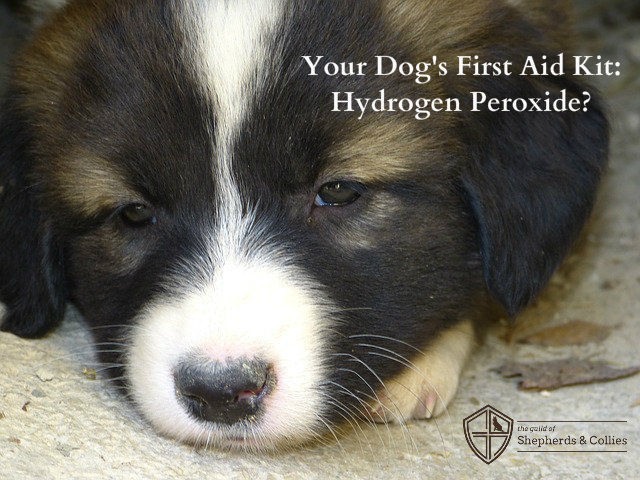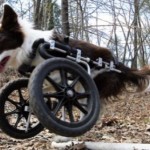Hydrogen Peroxide – A Plus or Minus for Your First Aid Kit?
Do You Properly Use Hydrogen Peroxide?
Hydrogen peroxide has long been considered a staple for any first aid kit, but it’s especially important for a pet first aid kit. The main reason offered is for inducing vomiting, but many people also promote hydrogen peroxide for wound cleaning. So what are good uses for hydrogen peroxide and should you have some in your first aid kit?
Hydrogen peroxide is widely used for inducing vomiting. This should be the 3 percent peroxide you can buy at any drugstore – not the more concentrated forms used for hair coloring. The recommended standard dose is one teaspoon (or 5 mls) for every 10 lbs of body weight. Always check the expiration date on your peroxide; expired peroxide will not work. Also, do not re-bottle your peroxide. The dark colored bottle will help maintain the potency of the peroxide.
Contact your veterinarian before you induce vomiting in your dog. Herding dogs are notorious for getting into all kinds of things they shouldn’t – especially herding breed puppies! Some of those things are conducive to vomiting and others are not, so be sure before you induce vomiting and actually create a bigger problem than you had. In addition, older dogs might have health conditions such as laryngeal paralysis that could make vomiting dangerous.
The hydrogen peroxide should be given orally. A plastic dosing syringe is very useful for this. It then helps to walk your dog around. If there is no response in 15 minutes, you can try a second dose. If you are inside, walk your dog outside and on a leash. Many dogs will try not to throw up inside and you want the dog on a leash so you can verify if the treatment worked – plus keep your dog from re-ingesting the problem.
Hydrogen peroxide is NOT recommended for cleaning out wounds. It can be tempting, since you have some readily available in your first aid kit, but don’t use it. Hydrogen peroxide will actually kill some of the cells present that are important for wound healing. By damaging those cells, you actually set your dog’s healing time back.
Instead, flush a wound with water, sterile saline, or any eye-flushing solution. Saline and eye solutions are best as they most closely mimic natural tissue fluids, but water works well, too. A hose is usually available to the barn where your herding dog may have been injured and a thorough flush will remove debris and bacteria. Out on a trail you probably have some drinking water with you that would work.
Bottom line? Keep some hydrogen peroxide in your first aid kit. Just use it to induce vomiting and be sure to check the expiration date periodically. Pack some sterile saline for the wound flushing.
Article By:
Deb M. Eldredge, DVM
Meet Our Evangelist








